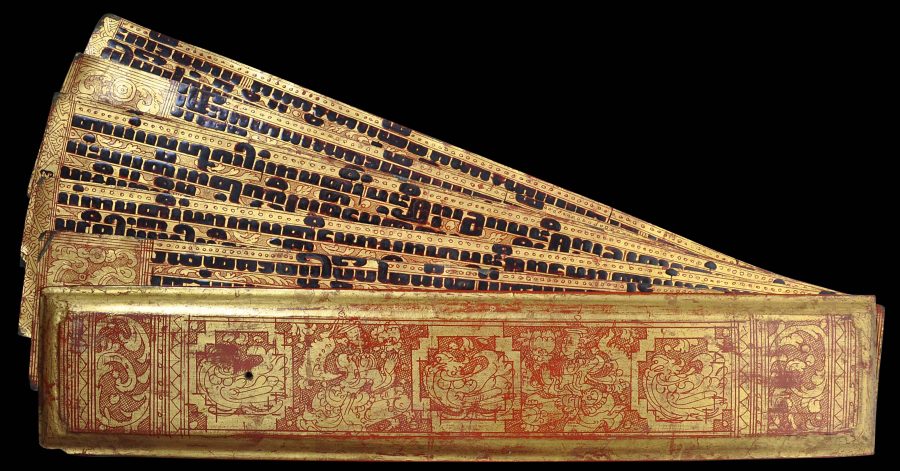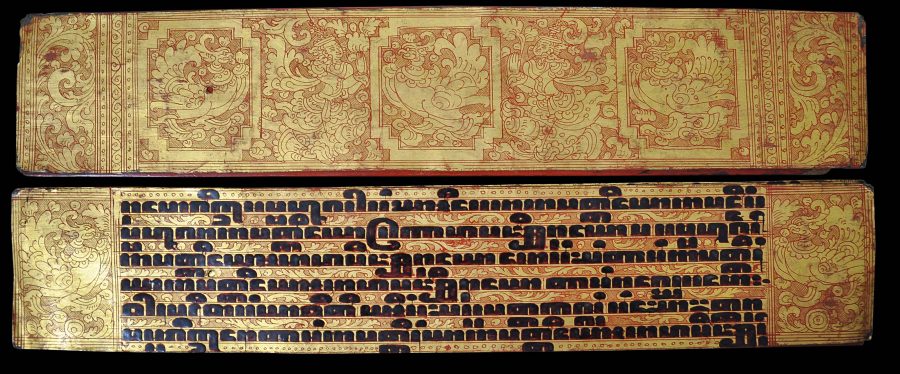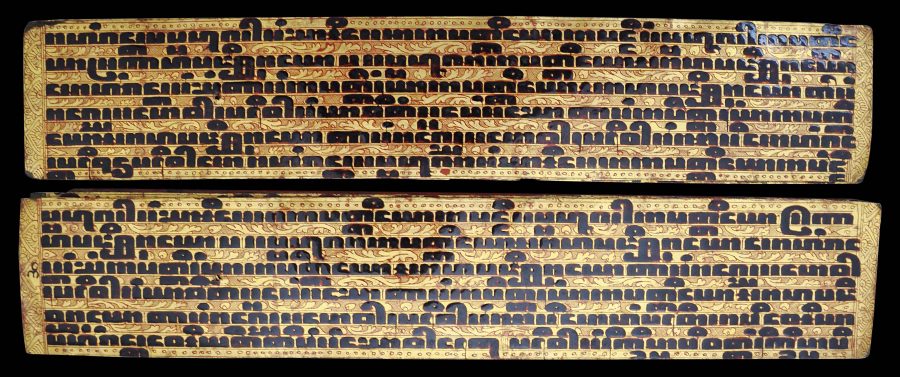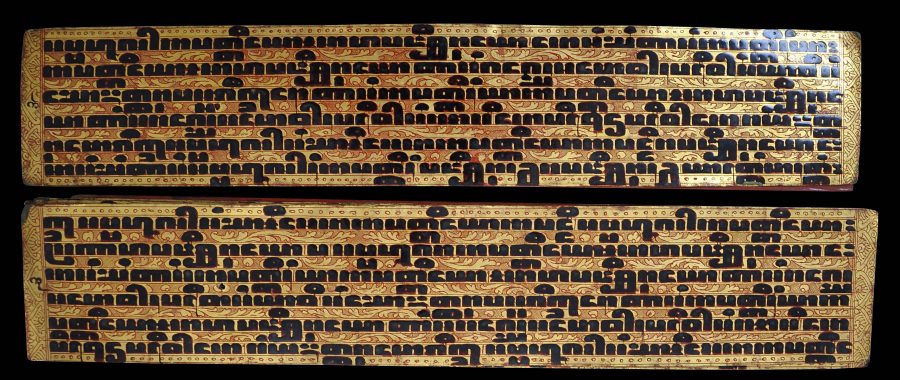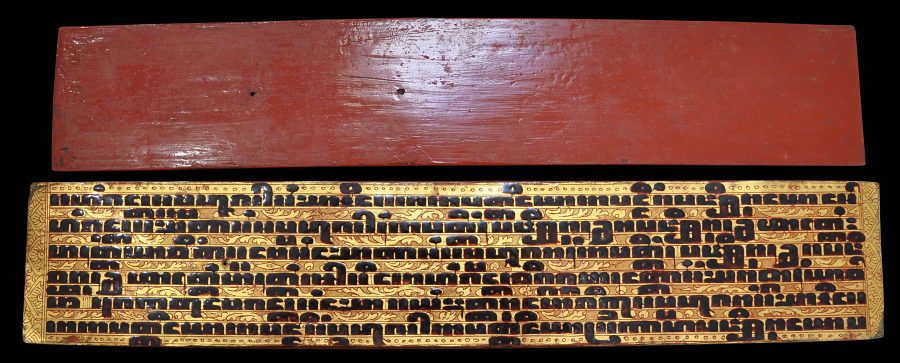Enquiry about object: 4254
Rare Lacquered Brass Kammavaca
Burma early 19th century
length: 47.6cm, width: 8.5cm - 10 leaves & 2 covers
Provenance
private collection, London
This gilded and red and black lacquered kammavaca (or kammawa-sa) manuscript set comprises two wooden covers with gold leaf shwe zawa work on the outer face, and ten unbound ‘pages’ of thin lacquered brass sheet. Each page has been inscribed with an extract from one of the nine khandakas, a section of the Pali Vinaya Pitaka which sets out the rules of conduct for Burmese Buddhist monks and novices.
Leaves or pages cut from metal sheet are unusual. According to Singer (1993), the panels, cut to the desired lengths, were sold by metal merchants in the Zaygyodaw Bazaar in Mandalay.
The vast majority of kammavaca leaves are cut from fabric which were then lacquered and cut into shape. Kammavaca leaves can also be made from lacquered textile, palm leaf, ivory and copper sheets. The covers and the outer faces of the introductory leaves are decorated with devas and other celestial beings within panels amid complex foliate scrolling borders.
Each leaf is decorated on both sides with six lines of square Burmese script in black magyi zi lacquer made from tamarind seed, between hatched (yazamat) borders. Small birds are shown amongst the foliage between the black script. Each leaf is numbered in Burmese script.
The pages are read horizontally and are turned away from the reader as it is finished and the next one is commenced.
A small hole in the covers and in each page allowed for a bamboo pin to be driven through the set to hold it together when not in use. Kammavaca manuscripts often were presented to novice monks on their joining a monastery, or to mark the ordination of a monk. They were also commissioned and presented to monasteries to mark life cycle events such as an important birthday, graduation, marriage or birth.
The condition of this set is unusually good for an extant kammavaca of lacquered brass and copper – usually, the lacquer did not adhere well to the metal, and over time, extensive chipping to the lacquerwork occurred. But here, the lacquer mostly is intact, with some rounding and crinkling of corners. The covers also are relatively well preserved with minor ships at some of the corners.
References
Fraser-Lu, S., Burmese Lacquerware, White Orchid Books, 2000.
Fraser-Lu, S., & D.M. Stadtner, Buddhist Art of Myanmar, Asia Society Museum, 2015.
Isaacs, R., & T.R. Blurton, Burma and the Art of Lacquer, River Books, 2000.
Lowry, J., Burmese Art, Victoria and Albert Museum, 1974.
Singer, N., ‘Kammavaca texts: their covers and binding ribbons’, Arts of Asia, May-June 1993.


